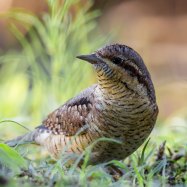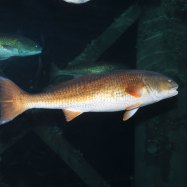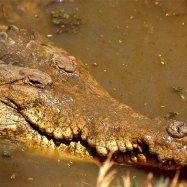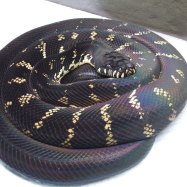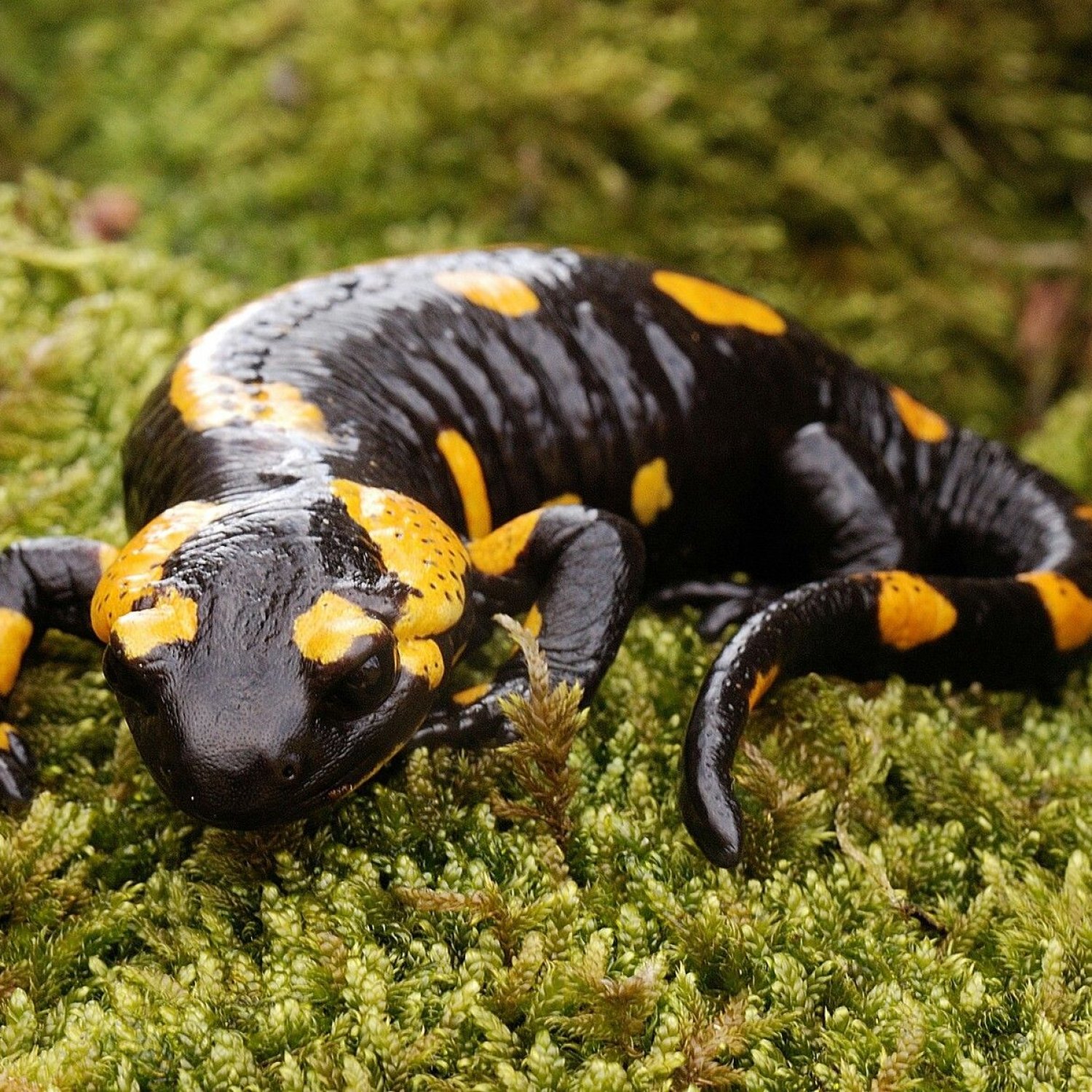
Salamander
3-8 inches
If you're exploring forests, lakes, rivers, or wetlands, keep an eye out for the elusive salamander! These long, slender creatures can grow anywhere from 3-8 inches in length and belong to the Salamandridae family. Don't let their small size fool you, salamanders play an important role in maintaining a healthy ecosystem. Make sure to give them plenty of space and admire their unique body shape with four legs. #salamander #wildlife #nature #forest #lake #river #wetland
Animal Details Summary:
Common Name: Salamander
Kingdom: Animalia
Habitat: Terrestrial and aquatic habitats
The Fascinating World of Salamanders
In the vast and diverse kingdom of Animalia, one group of creatures stands out for their unique characteristics and remarkable adaptability - salamanders. These intriguing creatures belong to the order of Caudata, with the scientific name Salamandridae, and are known to inhabit various habitats worldwide, ranging from forests and lakes to rivers and wetlands. With their diverse colorations and patterns, long and slender bodies, and carnivorous feeding behavior, salamanders are truly a fascinating species that deserve to be explored in more detail.Evolution and Characteristics
Salamanders have a long and complex evolutionary history, dating back more than 160 million years Salamander. They first appeared during the Jurassic period and have remained relatively unchanged since then. In fact, salamanders are one of the oldest vertebrates still in existence today.One of the defining characteristics of salamanders is their amphibian nature, which means they are able to live both on land and in water. They belong to the class Amphibia, along with frogs and toads, and have a unique body structure that allows them to thrive in both terrestrial and aquatic environments.
Salamanders have long and slender bodies, with an average length ranging from 3 to 8 inches, although some species can grow up to 2 feet. They have four legs, which are positioned laterally, and a long tail that helps them navigate through water. This body shape allows salamanders to move with great agility and speed, making them effective hunters.
Habitat and Distribution
Salamanders have a vast geographical distribution, with over 500 known species found all over the world, except for Antarctica and Australia. They are most commonly found in temperate and tropical regions, with a few species also inhabiting high-altitude areas Savannah Sparrow.Since salamanders are capable of living in both terrestrial and aquatic habitats, their preferred environment varies greatly. Some species are strictly terrestrial, living in moist forests and woodlands, while others are entirely aquatic, residing in lakes, rivers, and wetlands. A few species, known as semi-aquatic salamanders, have adapted to live in both environments.
This adaptability and wide distribution make salamanders a vital part of many ecosystems, playing roles as both predator and prey. They also serve as environmental indicators, with their presence or absence indicating the health of their habitat.
Feeding Behavior
Salamanders are classified as carnivores, meaning they primarily feed on other animals. However, their diet can vary depending on their size, habitat, and species. Some salamanders feed on small insects and invertebrates, while others have been known to eat larger prey such as fish, rodents, and even other salamanders.Salamanders have unique feeding methods, with some species using their long, sticky tongues to catch prey, while others use their sharp teeth to grab and consume their food. They are also known to use their strong sense of smell to detect prey in their surroundings.
As amphibians, salamanders rely on a moist environment to breathe, and some species have a special adaptation that allows them to absorb oxygen through their skin. This makes them vulnerable to pollution and habitat destruction, which can have a significant impact on their population and survival.
Colors and Patterns
One of the most fascinating aspects of salamanders is their diverse colorations and patterns. These creatures come in a vast array of colors, including shades of red, yellow, orange, black, and even blue. Some species have bright and vibrant colors, while others are more muted and blend into their surroundings.In addition to their colors, salamanders also have unique patterns on their skin, such as spots, stripes, and blotches. These markings are not just for aesthetics; they serve as a form of camouflage, helping salamanders blend into their environment and avoid predators.
Interestingly, color and pattern also play a role in communication among salamanders. These creatures use visual cues to interact with one another, especially during mating season. Males often display bright colors and patterns to attract females, and some species also use fluorescent markings to communicate with potential mates.
Conservation Efforts
Despite their remarkable adaptability and wide distribution, salamanders face various threats, primarily due to habitat destruction and pollution. Many species are endangered, and some have even gone extinct in recent years.Conservation efforts have been put in place to study and protect these unique creatures. In the United States, the Salamander Manifold Project is a citizen science initiative that aims to monitor the population and distribution of salamanders in the Appalachian region. This data is then used to make informed conservation decisions.
In Europe, the Hyla Project focuses on preserving the habitat of the Fire Salamander, which is under threat due to the destruction of its natural breeding grounds. This project involves creating artificial ponds and wetlands to ensure the survival of this endangered species.
Conclusion
Salamanders are truly remarkable creatures with a long and fascinating history. With their unique characteristics, diverse colorations and patterns, and ability to thrive in different environments, they are a vital part of many ecosystems worldwide. However, they face numerous threats that put their survival at risk, making conservation efforts crucial for their existence.Next time you encounter a salamander, take a moment to appreciate the wonder of these creatures and the important role they play in our world. From their ancient lineage to their impressive adaptability, salamanders are truly a one-of-a-kind species that deserves our attention and protection.

Salamander
Animal Details Salamander - Scientific Name: Salamandridae
- Category: Animals S
- Scientific Name: Salamandridae
- Common Name: Salamander
- Kingdom: Animalia
- Phylum: Chordata
- Class: Amphibia
- Order: Caudata
- Family: Salamandridae
- Habitat: Terrestrial and aquatic habitats
- Feeding Method: Carnivorous
- Geographical Distribution: Worldwide
- Country of Origin: Various
- Location: Forests, lakes, rivers, and wetlands
- Animal Coloration: Various colors and patterns
- Body Shape: Long and slender with four legs
- Length: 3-8 inches
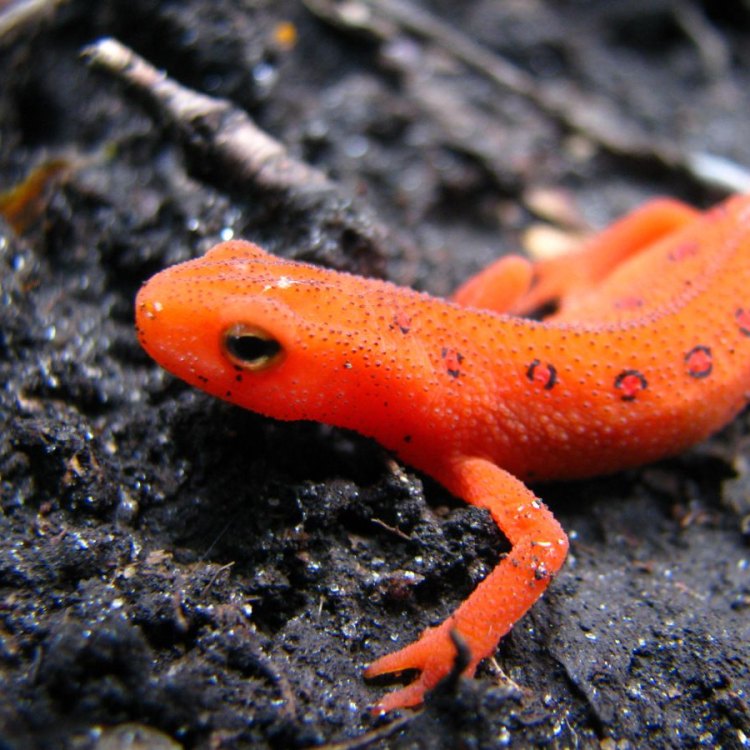
Salamander
- Adult Size: 3-8 inches
- Average Lifespan: 10-20 years
- Reproduction: Sexual
- Reproductive Behavior: Internal fertilization
- Sound or Call: Some produce vocalizations
- Migration Pattern: Varies by species
- Social Groups: Solitary
- Behavior: Nocturnal
- Threats: Habitat loss, pollution, climate change
- Conservation Status: Varies by species
- Impact on Ecosystem: Key predators and prey
- Human Use: Pet trade, medical research
- Distinctive Features: Moist skin, absence of scales, regenerative abilities
- Interesting Facts: Can regenerate lost body parts, some species are highly toxic
- Predator: Birds, snakes, and larger amphibians
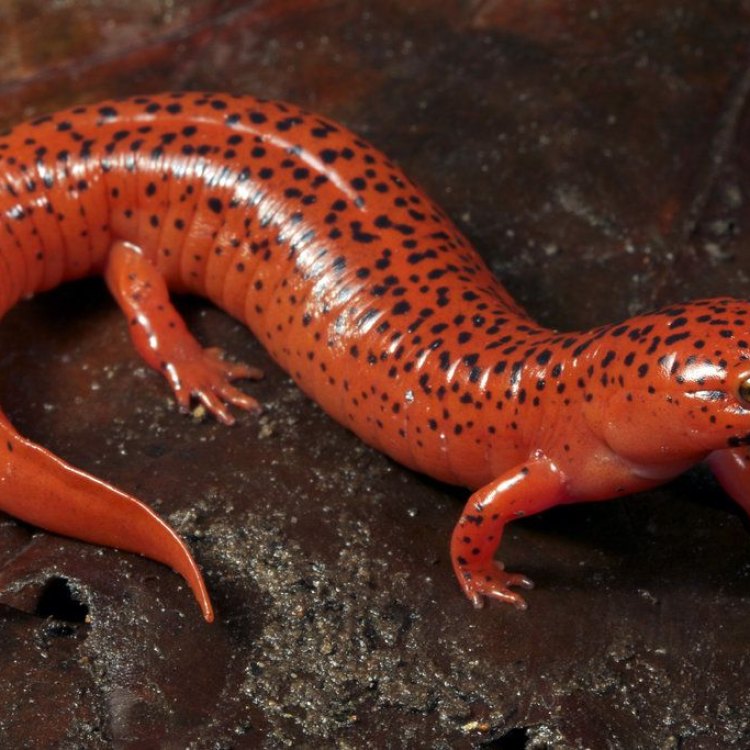
Salamandridae
The Amazing World of Salamanders: Unique Features and Vital Role in Ecosystem
Imagine walking through a lush forest, and suddenly, you come across a small, colorful creature. It has moist, shiny skin and moves gracefully like a ballet dancer. Upon closer inspection, you realize it is a salamander, one of the most fascinating creatures on the planet.Salamanders are part of the amphibian family, which also includes frogs and toads PeaceOfAnimals.Com. They are found in different habitats, from forests and mountains to streams and lakes. These intriguing creatures have been around for more than 160 million years, making them one of the oldest living species on Earth. In this article, we will explore the unique features of salamanders and their vital role in the ecosystem.
An Overview of Salamanders
Salamanders come in various shapes, sizes, and colors. The adult size of a salamander usually ranges from 3 to 8 inches, with some species reaching up to a foot in length. They have an average lifespan of 10-20 years, making them long-lived compared to other amphibians.These interesting creatures reproduce sexually, with males fertilizing the females internally. This process, known as internal fertilization, is one of their distinct features, as most amphibians reproduce externally.
One of the most intriguing aspects of salamanders is their ability to regenerate lost body parts Sumatran Orangutan. If a predator attacks them, they can regrow their tail, limbs, and even parts of their heart. This remarkable feature has fascinated scientists for decades and has led to numerous studies on their regenerative abilities.
Salamanders are also known for their distinctive features. Unlike most amphibians, they have moist skin and are absent of scales. This moist skin allows them to breathe through their skin rather than their lungs, making them extremely sensitive to environmental changes. Moreover, some species of salamanders are highly toxic, making them a crucial part of the food chain and an important defense mechanism against predators.
Behavior and Social Life
Salamanders are mostly solitary creatures, preferring to live alone rather than in groups. They are nocturnal, meaning they are most active at night, and spend most of their days hiding under logs, rocks, or in burrows.These solitary creatures have a diverse diet, feeding on insects, worms, spiders, and even other smaller amphibians. Some species of salamanders are also known to eat small fish and crustaceans, showcasing their diverse palate.
Many salamanders produce vocalizations, mainly during the breeding season, to attract potential mates. These vocalizations can range from chirping and grunting to a high-pitched scream. However, not all salamanders are vocal, and some species use chemical signals to communicate with each other.
Threats to Salamanders
Despite their incredible regenerative abilities, salamanders are facing numerous threats in the wild. Habitat loss is one of the biggest threats to their survival, as their natural habitats are being destroyed for human development.Pollution, particularly water pollution, also poses a significant threat to salamanders. These creatures are highly sensitive to any changes in their environment, and even slight pollution can be harmful to their health.
Climate change is another major threat to salamander populations. As the Earth's temperature rises, it affects the delicate balance of their ecosystem. This can lead to changes in their behavior, migration patterns, and even reproductive abilities, which can ultimately impact their survival.
The Role of Salamanders in the Ecosystem
Salamanders play a vital role in the ecosystem, serving as both predators and prey. As predators, they help control insect populations, which can be harmful to other animals. They also serve as prey for birds, snakes, and other larger amphibians, contributing to the food chain.Moreover, salamanders are also considered a key species in their ecosystem. This means that their presence or absence can significantly impact the balance of their habitat. In some areas, salamanders are the only source of food for certain species, making them crucial for their survival.
Human Use and Conservation Status
Unfortunately, salamanders are not just under threat in the wild, but from humans as well. The pet trade is a significant threat to their survival, as many people catch them from the wild and keep them as exotic pets. This not only disrupts their natural habitat but also contributes to a decline in their population.Moreover, salamanders are often used in medical research, primarily due to their regenerative abilities. While this has led to significant advancements in the medical field, it also poses ethical concerns regarding their well-being.
Depending on the species, the conservation status of salamanders can vary. While some species are considered least concern, others are classified as vulnerable or endangered. It is essential to raise awareness about the importance of conserving these creatures and protecting their natural habitats.
A Call to Action
As we continue to learn more about the unique features of salamanders and their vital role in the ecosystem, it is crucial to take action to protect them. Governments and organizations need to implement strict laws and regulations to prevent their habitats from being destroyed, reduce pollution, and regulate the pet trade. Individuals can also contribute by supporting conservation efforts and avoiding the purchase of salamanders as pets.In conclusion, salamanders are truly remarkable creatures with incredible features. From their ability to regenerate lost body parts to their vital role in the ecosystem, they continue to fascinate scientists and nature lovers alike. It is our responsibility to ensure their survival for generations to come, so we can continue to marvel at their beauty and uniqueness.
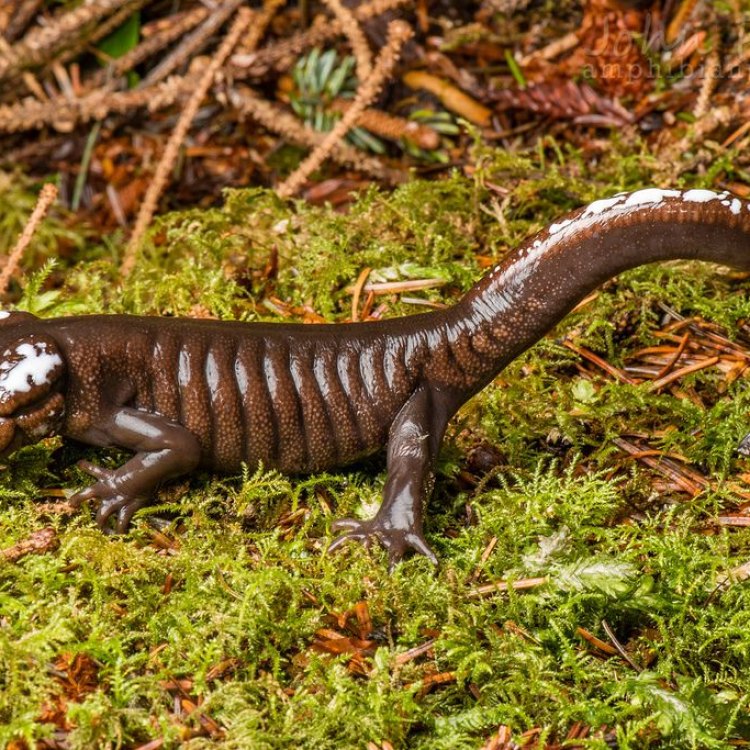
The Fascinating World of Salamanders
Disclaimer: The content provided is for informational purposes only. We cannot guarantee the accuracy of the information on this page 100%. All information provided here may change without prior notice.


